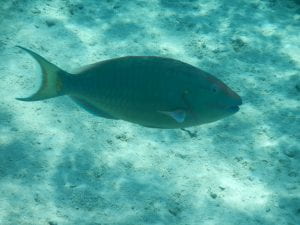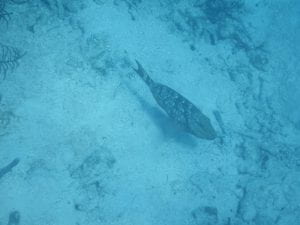Hi Blog,

These past two weeks, I have had the incredible privilege of being completely immersed in nature across two distinct, yet similarly vibrant ecosystems in Belize: the tropical rainforest and the coral reef.


Although the tropical rainforest and coral reef were very distinct ecosystems, I still noticed several similarities. Although both of these ecosystems—and the research stations we spent our time at—seemed significantly isolated from civilization, they were nevertheless both suffering from the impacts of human disruptions. At Las Cuevas Research Station, located in the heart of the Chiquibul Forest, we learned all about threats of deforestation and poaching (especially of the endangered Scarlet Macaw) leading to habitat loss and the unethical stripping of animals from their environment for the benefit of humans. Similarly, at Glover’s Reef, we saw firsthand how even a remote island is not immune to the impacts of human pollution and disruption. Especially on our last day at Glover’s Reef during our morning trash pick-up, we saw the countless amounts of trash that had accumulated on the edges of the island, especially in the coral graveyard. Furthermore, we learned that fish, such as surgeonfish, are often illegally harvested to be entered into the illegal pet trade.

Another factor that I noticed could be both a similarity and a difference was the structural complexity of these ecosystems. The rainforest ecosystem is vertically stratified, with different layers—from the forest floor to the canopy—allowing the development of niche specialization and a high degree of biological diversity. Likewise, although marine rather than terrestrial, I noticed that the coral reef also had different components culminating in structural complexity, such as the surface, nooks, and crevices.

This course went above and beyond my expectations. Before going on this trip, I just had a vague idea of a rainforest and the ocean, but being actually immersed in these ecosystems was truly surreal. Seeing all of the cool species that I’ve only read about or seen in documentaries with my own eyes was incredible—I even got to hold a Scarlet Macaw feather! Also, I got to see so many of my rainforest mammal species at the Belize Zoo, and saw some Blue Tangs in the coral reef!!

My favorite part of the course was, as cheesy as it may sound, getting to know all of my fellow Tropical Field Biologists! In fact, today, a group of us (Lily, Emily, Sadhana, and I) remaining in Houston for the summer grabbed dinner and boba together! Post-Belize food was heavenly, although I must admit, the food provided to us over the trip was significantly better than I had expected. Throughout the trip, I acquired a taste for plantains and hot sauce. Before this, I had not even touched plantains that were served in Rice serveries. Now, you know what my staple meal is going to be once school restarts in the fall.
On the other hand, my least favorite part of the course, I think, would be being eaten alive by bugs both in the rainforest and the reef. I am especially traumatized by that one night at Las Cuevas when Emily and I accidentally left our dorm room light on and returned to about 20 bugs buzzing around the light… I remember us trying to ignore them at first, but it quickly turned into a bug elimination frenzy, as the buzzing of the bugs (especially near my ears!) became unbearable. We learned our lesson about turning off the lights the hard way, but we know now. :,)
I learned SO many new, incredible things on this trip, but the three most notable things were:
1) The symbiotic relationship between Cecropia trees and Azteca ants. It was so fascinating (yet anxiety-inducing) to see all of the Azteca ants swarm out from the tree trunk to protect the Cecropia tree (which Dr. Solomon had macheted down), and the countless chambers within the tree. Without knowing anything about this tree, I would have never imagined that it would be a “high-rise apartment complex” for ants.
2) Human impact is everywhere. Even on remote islands, the impact of human pollution is still transferred. It was sad but incredibly powerful to see the contrast between the black and white fossilized corals and the vibrantly colored plastic pollution on the coral graveyard.
3) I am not immune to motion sickness nor sea sickness. I thought I would be different, but snorkeling and the boat ride almost took me out every time… Heat exhaustion and the side effects of drinking seawater (on accident) were not a joke and were quite a combination. So my biggest takeaway was: when in the ocean, do not drink seawater and drink lots and lots of (fresh!) water whenever possible.
Overall, Belize was such an incredible experience, and this will be a trip that I reminisce about often. When I close my eyes, I can almost still feel the breeze from the ocean as I lay on the dock at Glover’s Reef, or I can hear the screeches of the bats as I lay on the picnic table at Las Cuevas.
As I return to civilization, I’m eternally grateful for things I took for granted, such as cold water, clean clothes, and a sand-free bed. I’m now confident to call myself a tropical field biologist.
If any of you reading this blog right now are contemplating taking this course: take it. Take it and run. You will have the most amazing two weeks of your life that you cannot gain elsewhere.
Now for the last time, signing off:
With love,
Sohee























